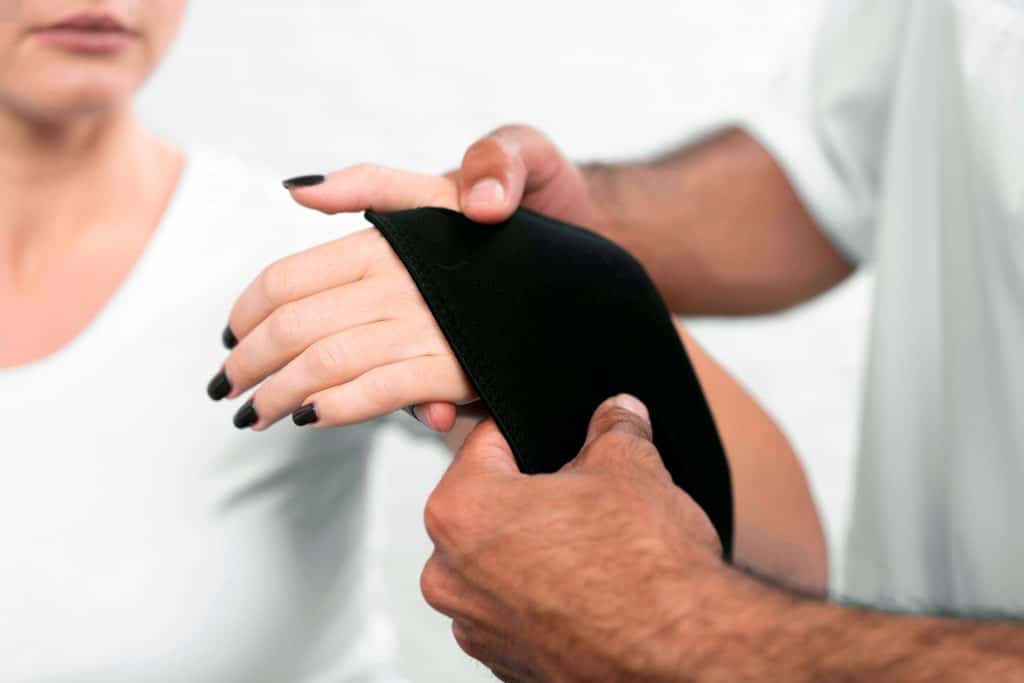Workplace injuries are alarmingly common. These are injuries that occur out of or in the course of employment. According to the data from the U.S. Bureau of Labor Statistics, the private sector reported slightly more than three million nonfatal workplace illnesses and injuries in 2013. One of the most frequent types of workplace injury is tenosynovitis.
The muscles and bones are linked together by the tendons. They enable bones to move while the muscles contract and relax. These tissues also aid in regulating movements, including sprinting, jumping, grabbing, and lifting. A person wouldn’t be able to control how his body moves without tendons.
Tendons are covered with a covering known as the synovium. This is a sheath that produces fluid to keep the tendon lubricated. It safeguards the tendons and facilitates their motion. When the tendon pushes on the bone to which it is linked, the fluid aids in its free and effortless movement.
The sheath may malfunction as a result of tendon injury. If this happens, the sheath might not produce any or enough synovial fluid. As a result, the sheath may then become inflamed or swollen. This is what is known as tenosynovitis.
Tenosynovitis is an inflammation of the tendons’ protective sheath. It is a painful and deliberating medical condition that can hurt and make it difficult for victims to move the joints as quickly as they usually can.
What Are The Causes of Tenosynovitis?
Tenosynovitis frequently has unknown causes. However, they could be brought on by stress, overuse, harm, or excessive activity. Additionally, they might be connected to a condition like diabetes, rheumatoid arthritis, or an infection.
Let’s consider the most common causes of tenosynovitis.
Overuse
Overusing a joint is the most typical cause of tenosynovitis in an active person. Overuse results from performing one characteristic movement over and over again. It is a frequent condition in workers requiring repetitive lifting or bending activities. Employees with repetitive motion tasks, such as those on manufacturing lines or processing facilities, may eventually have tenosynovitis-related joint pain.
The case of Sanyo mfg. Corp. V. Leisure perfectly exemplified this cause. In this case, the plaintiff was employed as part of the people in the assembly line to manufacture television sets.
As part of her job description, she had to carry the television set, which weighed fifty pounds, and place them on the assembly line. She also had to hook the antenna and fine-tune the television sets. In her job, she was always required to keep her arm bent and use constant twisting wrist motion. She repeated this procedure thirty times an hour on 240 television sets per day for three years.
She was denied when she developed tenosynovitis and applied for workers’ compensation benefits. However, the court held her entitled to the benefits.

Arthritis
Tendon sheath inflammation can occasionally occur along with joint inflammation in various arthritis, such as rheumatoid arthritis. In addition, the lining of the joints may be impacted by rheumatoid arthritis, an autoimmune condition. Swelling and discomfort are common effects of arthritis.
Infections
Tenosynovitis may be caused by infection after a surgical procedure or by an infectious disease. However, this is an uncommon cause.
A cut or puncture damage to the skin above a tendon may allow bacteria to enter and infect the tendon or tendon sheath, which could lead to an infection.
Workplace Tenosynovitis Claims
Work injuries are one of the leading causes of the popularity of tenosynovitis.
According to the law, employers owe a duty of care to their employees. This means that employers must put measures in place to reduce or eliminate the risk of injuries, such as tenosynovitis, inherent in that particular workplace.
Workplace injuries can significantly impact both an employee and an employer. However, the burden falls more on the employee, as they can cause a loss of productivity.
If an employee is injured at work, such an injured person is entitled to a worker’s compensation benefit.
Workers’ compensation is a kind of insurance. Businesses buy them on behalf of their employees if someone gets wounded at work and needs to be treated medically and given time off to recover.
Workers’ compensation will cover the cost of all wrist tenosynovitis-related therapies for those who successfully file an injury claim and prove they suffered occupational wrist tenosynovitis.
In the case of Henry v. A.C Lawrence Leather & co, the claimant suffered from tenosynovitis on both elbows due to work done during employment. The court found the claimant entitled to workers’ compensation benefits.
Let’s also consider the case of National Stores, Inc., v. Hester further to understand the tenosynovitis workers’ compensation benefits award.
In this instance, the plaintiff worked for the defendant in a position requiring her to continuously use a calculator. As a result, she developed tenosynovitis due to repetitive motion and strain.
She then applied for workers’ compensation benefits which were denied on the ground that the injury was not a result of any traumatic action. The plaintiff then instituted an action to recover damages. The court of appeal ruled in the plaintiff’s favor as the injury arose from and during her employment.

Benefits Of Using Medical Animation To Illustrate Workplace Tenosynovitis In Court
Being hurt at work can be highly stressful and debilitating. This is even worse when the employer and insurance provider take their time and prolong the process.
Even if tenosynovitis and other injuries are regarded the same as physical injuries in the United States, employers are always reluctant to grant workers’ compensation benefits. This is because tenosynovitis develops gradually over time. Hence, making it more challenging to establish a causal link to work-related activities.
The insurance company will fight to give you the smallest payout possible with the help of its lawyers. This is why medical animation is very instrumental to a tenosynovitis workplace claim.
To file a successful tenosynovitis workers’ compensation claim, an injured employee must first prove that the symptoms encountered were a result of the actions performed in the course of employment in the workplace. Proving this is often challenging. This is because tenosynovitis does not just occur in a moment. It may take months or years to develop. This is one of the places where animations can benefit your case.
Medical animation can visualize the entire medical journey of the injured employee. Thereby making it easier for the jury to comprehend how the repetitive actions had resulted in this life-altering injury.
Secondly, an injured employee who wishes to obtain compensation must prove that the injury was caused by the employer’s negligence. This means it must be demonstrated that the employer was aware of the risk but did nothing to eliminate or minimize those risks.
At this juncture, medical animation can make this proof easier by portraying how different the outcome would have been if the employer had taken the necessary steps to mitigate the risk of tenosynovitis.
Conclusion
A medical animation is a video that illustrates an expert’s judgment or a witness’ testimony concerning your case. With a case of tenosynovitis, it’s a great visual legal strategy.
At Fox-AE, we understand how to make optimize medical animation as a form of a demonstrative exhibit. We work closely with attorneys and expert witnesses on a case to ensure that we create admissible demonstrative aids.






